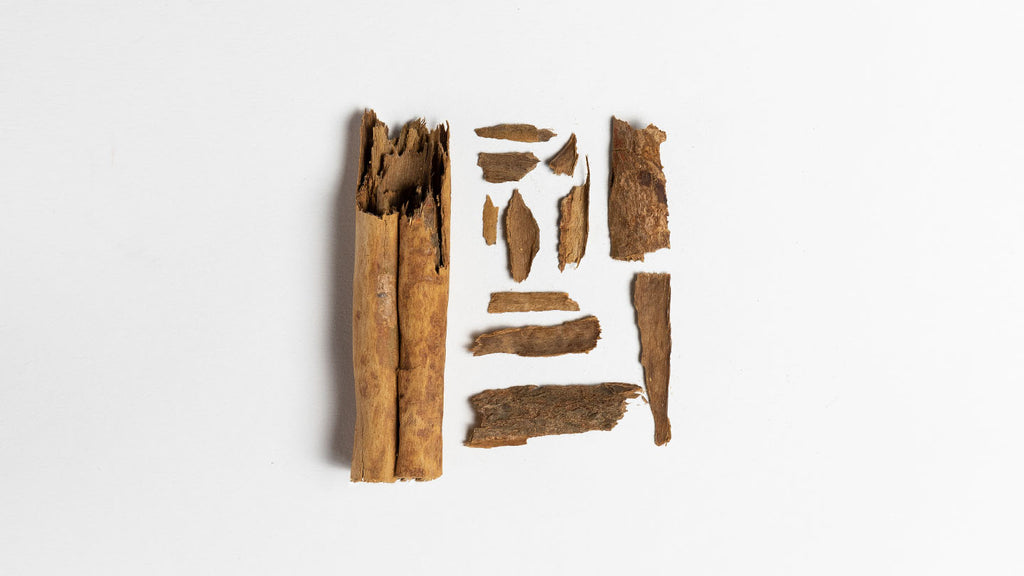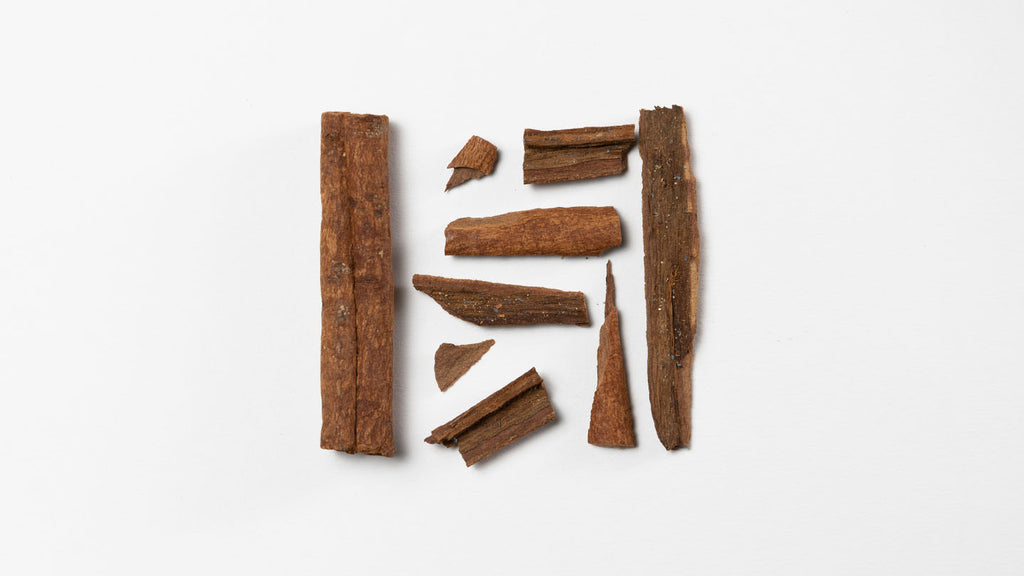03.11.2020
What Are the Different Types of Cinnamon?

It used to be if you wanted high quality cinnamon, you had to venture into the Arabian peninsula, find the great Cinnamologus bird, and knock down its nest with a slingshot. The legendary bird was said to build its nest out of the finest cinnamon sticks, high up on delicate branches too weak to be climbed by any person. At least that’s what Arabian traders told the rest of the world over two millennia ago, shrouding the source of the prized spice in mystery and driving up its value.
Even today cinnamon inspires confusion, with people often assuming that the variety of cinnamon they pick up from the store is fake cinnamon.
What is Cinnamon?
Cinnamon is tree bark, which in turn makes ground cinnamon the world’s most delicious sawdust.
Cinnamon trees are a tropical evergreen in the cinnamomum genus and part of the greater laurel family, which includes bay leaves and even avocados. There are over 250 plant species in the cinnamon genus, and three of them are important to The Spice House. You will recognize them by their common names; Ceylon Cinnamon, Indonesian Korintje Cinnamon, and Vietnamese Saigon Cinnamon.
Ceylon Cinnamon
Scientific name: Cinnamomum verum (formerly cinnamomum zeylanicum)

This is the ‘real’ cinnamon most people are referring to. Its scientific name even means ‘true cinnamon’ in latin. This is not to say that other types of cinnamon out there are fake or inferior, but the distinct flavor of Ceylon cinnamon has been preferred over cassia cinnamon for thousands of years.
Ceylon cinnamon has a delicately floral and citrusy aroma. It pairs especially well with poached fruits, homemade jams, teas, and coffee. The flaky bark is commonly used for making tea on its own. This variety is most favored in the kitchens of Europe and Mexico in particular—where you’ll find it used heavily in Mexican hot chocolate, rice pudding, and atole.
Like all ground spices, cinnamon should be purchased fresh and used quickly. This is especially true with Ceylon cinnamon’s delicate flavor. This is why we grind all our spices in small weekly batches, so you can cook with the most potent flavors possible.
Ceylon cinnamon is native to the island of Sri Lanka—previously known as Ceylon—where the world’s majority of Cinnamomum verum is still grown today. The spice comes from the delicate inner bark of the tree, which grows more like a bush or willow shrub. The harvest is a sustainable process as the limb is cut a foot from the ground, which later grows back for another harvest in 5-7 years.
Ceylon cinnamon is harvested when the rainy season begins in Sri Lanka. Sap within the tree begins to rise at this time making it easier for the outer bark to be stripped away while the aromatic compounds are also most concentrated. Once stripped away, the thin, inner bark is layered and rolled up together like a cigar before it is cured in partial shade.
Korintje Cassia Cinnamon
Scientific name: Cinnamomum burmannii

If you’re American and grew up with French toast, you’ll instantly recognize this nostalgic flavor. Korintje cinnamon is the industry standard for bakers, chefs, and home cooks in the United States for its dependable and pronounced bouquet. The bark’s bittersweet flavor is reminiscent of hot cinnamon candies and is popular in many sweet baking recipes. In savory cooking, the whole cinnamon stick is often added to a pot of steamed rice or a pan of braised meat.
Indonesia produces the most cinnamon in the world, specifically on the island of Sumatra where the western regency of Kerinci is the center of production. This variety grows on a taller tree than the Ceylon variety. The cassia bark is cut off from the base of the tree in sheets like birch bark. The outer part of the bark is carefully groomed by hand with a curved knife to clean off any moss before it is laid in the sun to dry.
Vietnamese Saigon Cassia Cinnamon

Saigon cinnamon is our bestselling varietal and often the first thing people try at the Spice House. If you’ve only experienced ground cinnamon that’s been sitting on the grocery store shelf for who knows how long...our freshly ground Saigon cinnamon will blow you away. Vietnamese cinnamon has a remarkably high essential oil content, delivering a deliciously hot flavor that is noticeably sweet like stevia. The outstanding flavor of this cinnamon makes for memorable and unmatched cinnamon rolls, snickerdoodles, and apple pie. In its home country of Vietnam, a piece of this cinnamon bark adds complex depth to a pot of pho broth.
The name Saigon cinnamon can be misleading. Similar to how Tellicherry peppercorns are not actually grown in the city of Tellicherry, but the surrounding Indian countryside, Saigon cinnamon grows best in the central mountain forests of Vietnam. Much of the highest quality bark comes out of the Quảng Ngai province where it is harvested in spring. Beginning in March, the air of rural districts like Tay Tra become perfumed by sheets cinnamon bark drying in the sun.
Vietnamese cinnamon is harvested much the same way as the Indonesian variety. Sheets of bark are stripped from the base of the tree, cleaned with a knife, and dried in the sun. Not only is the essential oil content greater than Indonesian cinnamon, Vietnamese cinnamon tends to be thicker and larger.
There is no right or wrong way to use cinnamon in regards to its flavor. We do suggest buying it often and in smaller amounts to enjoy its peak flavor. If you have questions about cinnamon, or want to share your favorite recipe that calls for it, email us at spices@thespicehouse.com or leave us a comment below.
Article by Geoff Marshall, Staff Writer
We love to sprinkle a little cinnamon over the ground coffee before brewing. Anyone prefer one over the others for this particular use?
I love to use cinnamon extracts or cinnamon powder for baking. I am more interested in making Indian curries.I heard about Mane kancor extracts.Any idea?
One of the best ways to sample the difference is to smell and taste each one straight.
From there, you can begin trying each one in your favorite recipes. Try having French toast three days in a row, using a different cinnamon each time.
Hi Carolyn,
That’s a great question. There really are no rules, but here are some of our choices.
For Indian and Pakistani cuisine, we like to use Ceylon cinnamon as it comes from nearby Sri Lanka.
For Indonesian dishes, try using our Korintje cinnamon.
For Vietnamese dishes, try our Saigon cinnamon.
Happy cooking!
I uwould love to know how I can do a taste comparison of the different cinnamons I have purchased. Should I test them straight, on toast or make a tea? Thank you!
I love using whole spices to make Indian style dishes, which cinnamon is best suited for savory south Asian dishes? Thanks
i love baking. so I want to make some Cinnabon rolls and i am not sure which cinnamon to use, ad they use a specific cinnamon in baking their rolls. Any suggestions?
Hi Louise Vanni,
One Flatpack contains enough spice to refill a 1/2-cup jar.
stars:5How much cinnamon is in a flat pack?
Thank you
Hi Marlene,
“Best” is really whichever flavor you’re looking for or enjoy the most. If you want a strong and sweet cinnamon, try Saigon. If you’re looking for a familiar and standard cinnamon, try Korintje. If you’re looking for a mellow and complex cinnamon flavor, try Ceylon cinnamon.
We are unable to make any health claims in regards to our spices, but it is widely known that Ceylon cinnamon is the preferred and recommended spice by health professionals.
Please let us know if this helps answer your question.